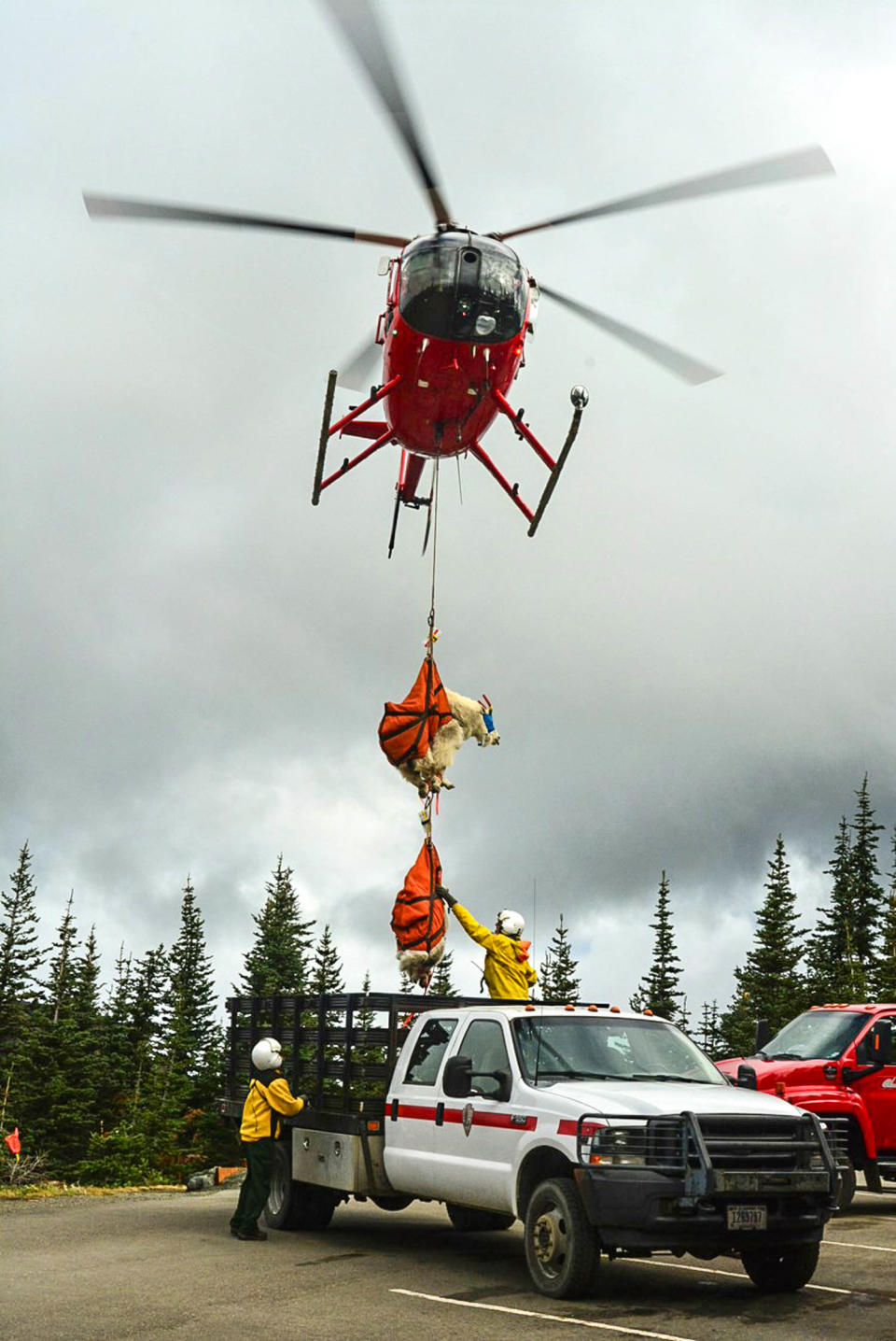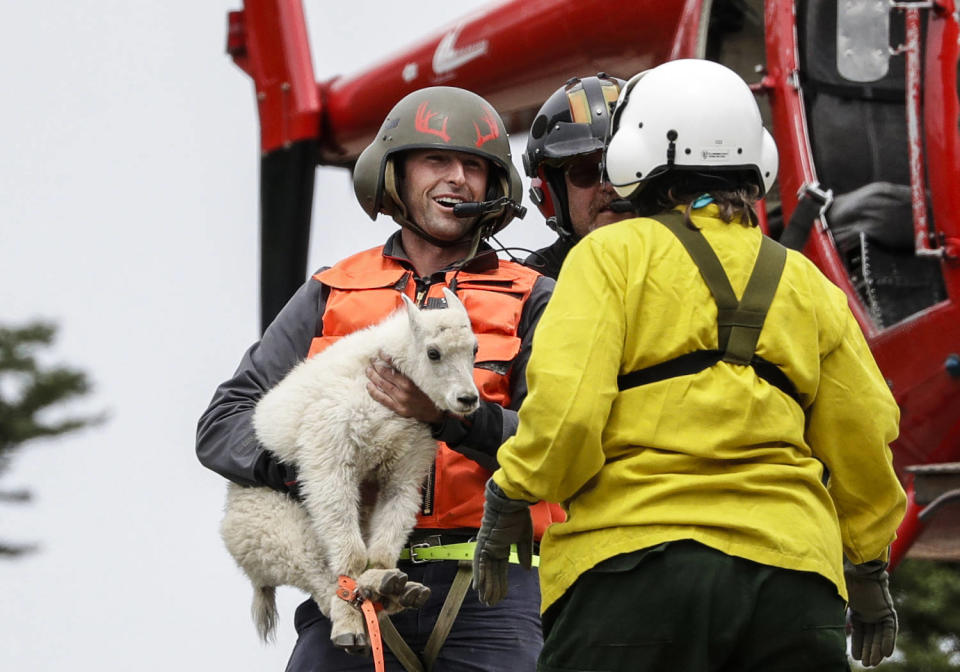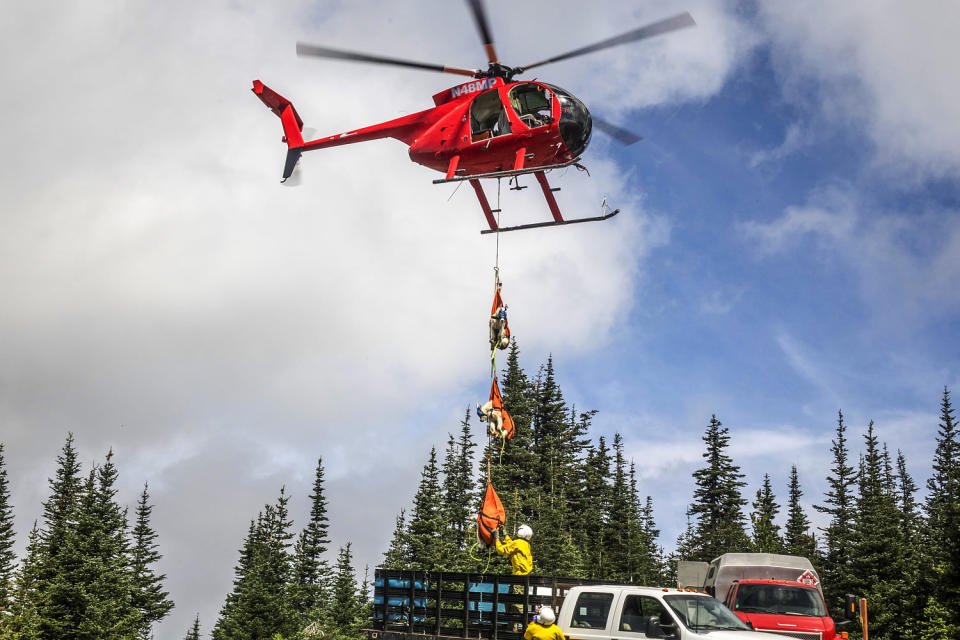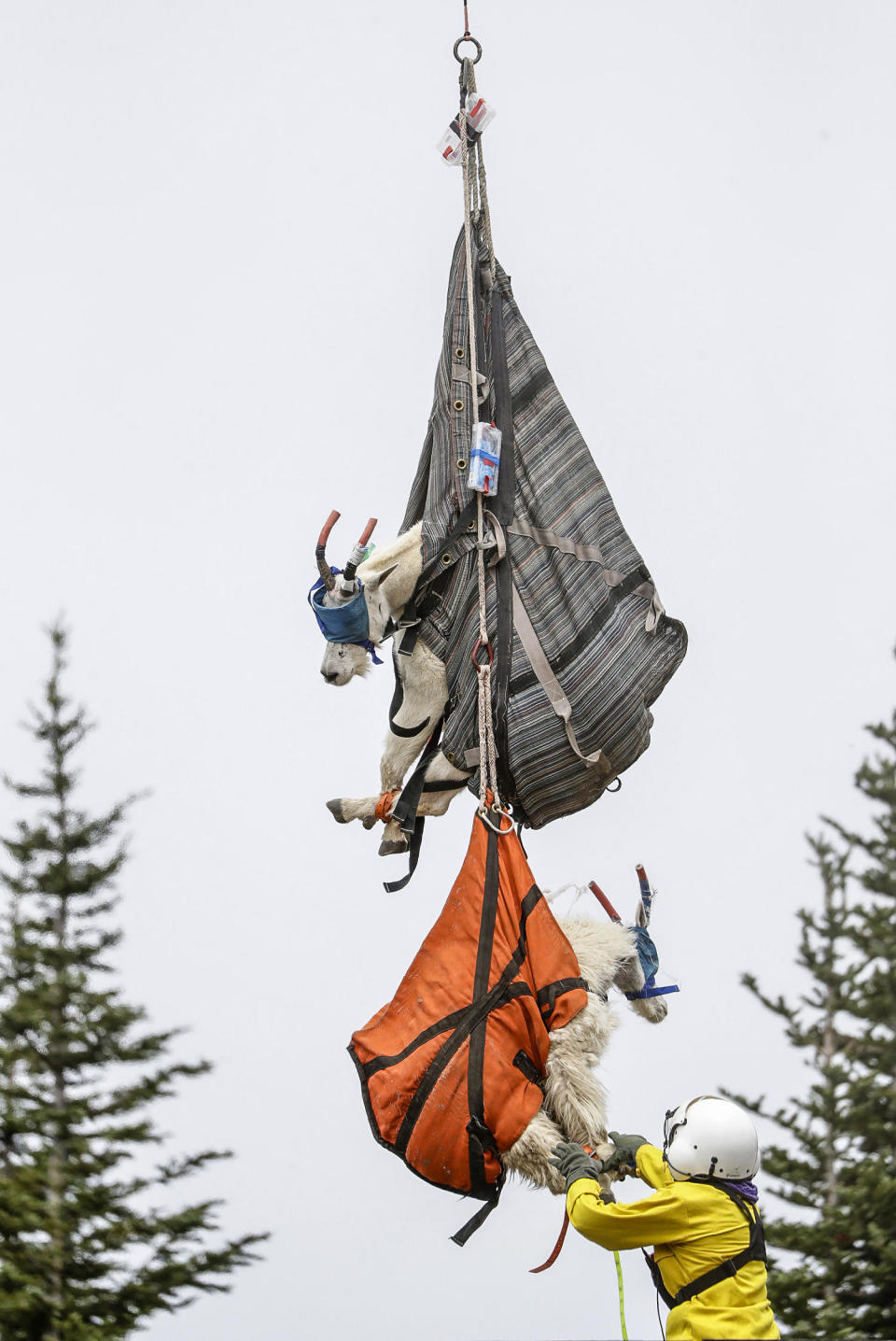For three summers, wildlife managers wrestled mountain goats in Washington state’s Olympic National Park, blindfolded them, and then flew them into remote areas of the state’s Cascade Mountain Range. This was an ambitious project to increase the goat population in an area where goat populations were once widespread.
Researchers released a total of 325 goats into the Cascades from 2018 to 2020.
Most of the goats that scientists track today have died.
“We’re disappointed that the survival rate was so low,” said Rich Harris, a retired state wildlife biologist who led the translocation project.
It is difficult to know exactly how many mountain goats survived because not all have been tracked. But in a study published in September, Harris found that a translocated goat had only a 56% chance of surviving from year to year. Of the 217 samples of translocated goats, 165 had died by the end of 2022.
The Everett Herald reported that wildlife biologists working with tribal nations were able to find only a few live mountain goats from the groups they monitored.
The goal of this effort was to promote mountain goat recovery in the Cascades, where the species’ numbers have fallen significantly after decades of overhunting. The project will also eliminate non-native mountain goats from the Olympic Mountains, which some officials say are damaging plants native to the region. In 2010, a hiker was injured and killed in a rare attack; The mountain goat was all too familiar with the presence of humans.
But the project’s outcome has revealed the extent to which climate change is rapidly transforming the West’s rugged mountain landscapes, and that humanity’s best-laid plans for wildlife face ever longer challenges as extreme weather increases.

Researchers knew that the relocated mountain goats would have a difficult first winter and expected some to die. They now suspect that the effects of climate change are affecting the survival rates of mountain goats, and domestic goats are also struggling.
It was difficult for the relocating goats from the beginning.
“If you pick them up and drop them off in an unfamiliar area, you will experience the initial trauma while moving. “It’s going to be difficult to find your way in unfamiliar areas,” said David Wallin, a professor of environmental sciences at Western Washington University.
But this doesn’t fully explain the poor results. Harris conducted an analysis that included native mountain goats in the Cascades for comparative purposes; findings showed that their population was also declining.
“While the translocated animals did not do very well, they did not perform any differently than the native animals,” Harris said. “There was a dramatic decline in condition. Climate-related weather factors are at play.”
His research found that changing weather conditions associated with climate change were associated with mountain goat survival over the past 20 years. Goats benefit from a cool spring with regular snowmelt, leaving alpine meadows rich in nutrients throughout the summer. But in recent years they have faced heavy snowfalls, rapid spring thaws and dry summer droughts.
“The take-home message here is, wow, I’m not sure where the goats are going to be in the next decade, two or three years,” Wallin said.
The Washington Department of Fish and Wildlife estimates the state’s mountain goat population has fallen from 1,537 in 2015 to 917 in 2022.


State, federal and tribal biologists spent years formulating plans to relocate the goats, convincing the public, and finally navigating the complex logistics.
The plan called for at least half the Olympic goat population to be captured and transported to the Cascades, and then any goats they could not relocate would be killed.
For three summers, helicopters hovered over the snow-capped peaks of Olympic National Park. Workers hit the goats with nets or darts that trapped their legs, then surrounded them, blindfolded them, sedated them, placed them in harnesses, and took them away.
The goats received veterinary care and were transported by refrigerated truck and ferry across Puget Sound to the Cascades for release.


Veterinarians eventually euthanized six goats; 23 died during capture and three during transport. Sixteen children were taken to zoos, according to Patti Happe, an Olympic National Park wildlife biologist who has since retired.
According to the plan, most of the remaining goats in Olympic National Park were killed: around 175. The studies ended in 2022, and Happe said visitors reported only two credible reports of mountain goats last year.
Most of the animals were 3 to 7 years old when they were relocated. Mountain goats can live until puberty. Many were given GPS collars designed to track their location.
Harris said he knew the goats would have a hard time during their first winter, but he expected their survival rate to increase to near normal, about 80-90%. But the newcomers never seemed to stabilize.


Happe said environments in the Alps are changing rapidly as global warming further increases temperatures. Charismatic species such as mountain goats, often photographed by hikers, are easily recognizable examples of trends that also threaten marmots, pikas and other alpine species.
“They’re a good symbol of what’s going on,” Happe said. “Climate change has put us in a bit of a difficult situation. “I don’t think we thought it would affect us this much.”
But the biologists behind the translocation project said they don’t see it as a failure or a wasted effort. Happe said wildlife managers identified some of the relocated females as having children, suggesting they may have reproduced and introduced new genes to the general population.
It’s too early to know if the species will recover, so there’s still hope for the goats.
“Despite some of our frustrations, at the end of the day I don’t think we did anything wrong,” Harris said. “It may seem like a useful thing to do, but it’s not going to stop the climate from changing.”
This article first appeared on NBCNews.com.